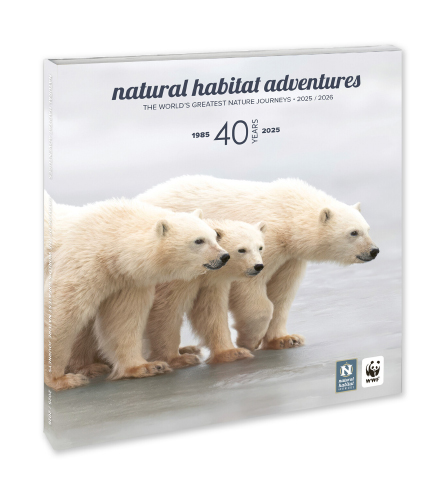
Science shows that being in nature is good for us. Psychologists say that a peaceful walk through a natural setting can reduce anxiety and stress and enhance attention.
In 2024, I started the year by writing about nature: CO2 emissions, temperatures and the optimism a lot of us felt about clean energy technologies with consistent cost declines. I’d like to end 2024 on the same theme: nature, but this time about how we’re going to need it more than ever to restore balance in our lives when things will seem to be going out of control.
The truth is that nature itself is a hard concept to grasp. So, let’s begin there. Generally speaking, humans have a positive view of nature. But whether that love for the external world is learned while growing up or something we’re born with, the notion of nature is surely nuanced; it’s highly individual, and that recognition should influence how we plan our cities in the future.
And, there’s many good reasons to explain our collective love of nature. Psychologists say that a peaceful walk through a natural setting can reduce anxiety and stress and enhance attention. Every day, more and more studies add to the growing evidence that nature is good for us, and more nature prescriptions would help more of us with our mental and physical health needs.

“Biophilia” describes the idea that it’s natural for humans to feel an automatic, positive attachment to nature because over hundreds of thousands of years, we evolved in it. A primal need for nature is, therefore, baked into our DNA.
Nature love comes from both your environment and heredity
It is well known that nature has a positive effect on people. In cities, especially, studies have shown that trees and other greenery contribute to people’s well-being. However, experts do not agree on the reasons behind this phenomenon, known as biophilia.
Some believe that it is natural for humans to feel an automatic, positive attachment to nature because human evolution over hundreds of thousands of years occurred in nature. A primal need for it is, therefore, baked into our DNA; and diminishing access to nature is putting our health at risk. Others argue that there is no evidence for this, and that influences during childhood determine how we view nature.
To create a clearer picture of how our love of nature is formed, researchers from Sweden’s University of Gothenburg and the Swedish University of Agricultural Sciences reviewed several studies within this field that examine both innate factors and what individuals experience during their lives, primarily as children. In a recently published article, the researchers state that both environment and heredity influence an individual’s attitude toward nature, but that a wide range of factors also affect how a love of nature is expressed.

Some say that there is no hard evidence for biophilia and that what we experience during childhood determines how we view nature.
This is because people react differently to nature. In one Japanese study, subjects were asked to walk in a forest and in a city while their heartbeats were measured. Results showed that positive emotions while walking in a forest increased in 65% of the study’s participants. Thus, far from everyone had a positive perception of nature. Another environmental psychology study found that research subjects are unconsciously drawn to nature instead of cities, and that this attraction was reinforced in those whose childhoods were rich in nature.
An additional study on identical and nonidentical twins showed that a genetic component influences an individual’s positive or negative relationship with nature. But the study also highlighted the importance of environment in terms of attitudes towards nature.
Moreover, nature can mean completely different things to different people. Some enjoy parks with lawns and planted trees, while others prefer being in the wilderness. The researchers believe that this variation is also determined by both environment and heredity. So, it’s important that we don’t standardize “nature” when planning greenery in our cities and towns. We shouldn’t replace wild greenery with a park, for example, and assume that it will be good for everyone. The scientists say that future studies that dig deeper into the interactions between environmental and hereditary factors are essential if we are to understand what shapes individuals’ relationships with nature.

Nature can mean completely different things to different people. Some think wildernesses (roadless or not) are nature, while others would say a park with lawns and planted trees is a natural setting.
Nature walks restore your attention
Not only do trees clean the air and provide shade to create a tolerable urban climate on hot days, urban parks and green spaces contribute to increased physical activity and recovery from stress. And now, we can add “restores attention” to that list of benefits.
In a study conducted in 2022 between April and October, University of Utah psychology researchers analyzed electroencephalography (EEG) data recorded on each of 92 participants immediately before and after they undertook a 40-minute walk.
The study participants started out by doing a cognitive task in which they counted backwards from 1,000 by sevens—a draining activity no matter how good you are at mental math. Right after that, they were given an attention task to deplete their attentional reserves before doing the standardized “Attention Network Task.” They then went for a walk without their electronic devices or talking to anyone along the way: half walked through Red Butte Garden, the least built-up part of an arboretum in the foothills just east of the university, and half through the nearby asphalt-laden medical campus. Both routes covered two miles with similar amounts of elevation gain.

Not only do trees, such as these in Portland, Oregon, clean the air and provide shade to create a tolerable urban climate on hot days, urban green spaces contribute to increased physical activity and recovery from stress.
The scientists fitted each participant with a cap with holes to support an array of 32 electrodes that contact the scalp with the help of a special gel. The electrode system could record very small voltages and provided brain maps that revealed three components of attention: alerting, orienting and executive control. Executive control—important in concentration and an essential element of higher-order thinking—occurs in the brain’s prefrontal cortex, an area critical for coordinating disparate tasks, decision-making, problem-solving and working memory. The things that we do on an everyday basis tend to heavily use those executive attentional networks.
Results, which appeared in January 2024 in Scientific Reports, didn’t show much of a difference for alertness and orientation between the asphalt and garden walkers, but they did demonstrate that the participants who walked in nature improved in their executive control on their tasks above and beyond the benefits associated with exercise. The urban walkers did not, meaning that there’s something unique about the environment that a person walks in. What sets this study apart from much of the existing research into the human–nature nexus is its reliance on EEG data as opposed to surveys and self-reporting, which do yield helpful information but can be highly subjective.
The researchers hope that these findings can be refined to show what kind of natural settings result in optimal cognitive benefits and how much exposure is needed to help. If we understand something about what makes us mentally and physically healthier, they say, we could then potentially engineer our cities in a supportive way. They also advise that you leave your phone in your pocket when walking the trails. You’ll find that your attention is restored, and you’ll think more clearly.

Leave your phone in your pocket when you take a nature hike or short walk. Let the environment restore your brain and attentional focus.
Nature soundscapes and nature prescriptions improve well-being
Existing research shows that natural sounds, like birdsong, can lower blood pressure and heart and respiratory rates, as well as self-reported anxiety and stress. Conversely, anthropogenic soundscapes, like aircraft noise or traffic, are hypothesized to have negative effects on human health and well-being in a variety of ways.
To prove that hypothesis, 68 student volunteers recently listened to three, three-minute soundscapes: a nature soundscape recorded at sunrise in West Sussex in the United Kingdom, the same soundscape combined with 20-mile-per-hour road traffic noises, and the same soundscape with 40-mile-per-hour road traffic noises. General anxiety and mood were assessed before and after hearing the soundscapes using self-reported scales.
The study, published in the journal PLOS ONE in November 2024 and authored by scientists from the University of the West of England and London’s Bat Conservation Trust, found that listening to a natural soundscape reduced self-reported anxiety and stress levels and enhanced mood recovery after a stressor. The natural soundscape alone was associated with the lowest levels of anxiety and stress, and the highest levels were reported after hearing the soundscape that included 40-mile-per-hour traffic.

Birdsong and other natural sounds can lower your blood pressure and heart and respiratory rates, as well as lessen your anxiety and stress. However, man-made sounds, such as vehicle traffic, can mask the positive impacts of natural soundscapes.
The authors conclude that reducing traffic speeds in urban areas might influence human health and well-being not only through safety impacts, but also through the effects on natural soundscapes.
Another way to reduce anxiety and stress is through nature prescriptions. A new report for the United Kingdom’s Department for Environment, Food and Rural Affairs by researchers from England’s University of Exeter and colleagues around the country has shown that expanding access to Green Social Prescribing can promote well-being and improve mental health.
Green Social Prescribing is the practice of supporting people with mental health needs by engaging them in nature-based activities. Referrals typically come from general practitioners, community mental health teams or social workers, but people can also self-refer. There are many different types of nature-based activities and therapies, including care farming, conservation projects, exercise, gardening, horticultural programs, sports or talking therapies in the outdoors.

Green Social Prescribing—or dispensing nature prescriptions—is the practice of supporting people with mental health needs by encouraging them to engage in nature-based activities.
In total, 8,339 people with mental health needs took part in nature-based activities at seven Green Social Prescribing Project Test and Learn Pilots across England. Prior to accessing nature-based activities, participants’ levels of anxiety, happiness, life satisfaction and feeling that life is worthwhile were worse than national averages. After taking part in the project, levels of life satisfaction and feeling that life is worthwhile improved significantly, and levels of anxiety and happiness were in line with the national averages.
The authors of the report say that their findings are significant because they provide evidence that Green Social Prescribing is an effective way of supporting people who pursue better mental health. However, there must be an ongoing commitment from policymakers to understand the needs of communities and enable more diverse people to connect with nature, alongside investment in those organizations that provide nature-based activities.
With an average cost of $640 per participant, researchers also found that Green Social Prescribing was a cost-effective method for helping people across a wide spectrum of mental health needs. That’s when compared to other interventions, such as behavioral activation, cognitive behavioral therapy, collaborative care for depression and early intervention for psychosis.

After taking part in Green Social Prescribing, many people reported that their senses of well-being had improved and that their levels of satisfaction with their lives had risen significantly.
Nature rewilded resets balance
In 2025, I think we need to rewild our cities and countrysides—and ourselves. But by that I don’t mean giving land back to nature and then abandoning it completely. We humans have been reshaping the environment for millennia, and so there are some species that depend on human-influenced landscapes.
However, for centuries, we’ve been fiercely taming nature, bending it to our will. From the unrelenting burning of fossil fuels to backyard gardens, humanity has been etching its footprint on the planet. And we’ve taken it too far. We’ve hampered the globe’s ability to absorb carbon and created a devastating decline in biodiversity.
Rewilding is resetting the balance, reclaiming some land from the tamers and allowing it to repair itself. But we can’t exclude people. As Rewilding Britain, a network of rewilding practitioners, explains it: “Rewilding seeks to reinstate natural processes and, where appropriate, missing species—allowing them to shape the landscape and the habitats within. It’s focused firmly on the future, although we can learn from the past. Rewilding encourages a balance between people and the rest of nature so that we thrive together.”

Rewilding seeks to reinstate natural processes and, where appropriate, missing species. For example, reintroducing bison to a landscape increases plant diversity, improves drought resilience, distributes nutrients and keeps open lands open.
Can we do that in 2025?
Let’s try.
I wish you a great start to a new year,
Candy


























